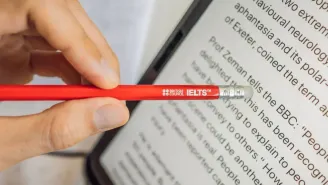When Conversations Flow Reading Answers Passage
When Conversations Flow Reading Answers Passage
Paragraph A. We spend a large part of our daily life talking with other people, and consequently, we are very accustomed to the art of conversing. But why do we feel comfortable in conversations that have flow but get nervous and distressed when a conversation is interrupted by unexpected silences? To answer this question, we will first look at some of the effects of conversational flow. Then, we will explain how flow can serve different social needs.
Paragraph B. The positive consequences of conversational flow show some similarities with the effects of ‘processing fluency’. Research has shown that processing fluency — the ease with which people process information — influences people’s judgments across a broad range of social dimensions. For instance, people feel that when something is easily processed, it is more true or accurate.
Paragraph C. Moreover, they have more confidence in their judgments regarding information that came to them fluently, and they like things that are easy to process more than things that are difficult to process. Research indicates that a speaker is judged to be more knowledgeable when they answer questions instantly; responding with disfluent speech markers such as ‘uh’ or ‘urn or simply remaining silent for a moment too long can destroy that positive image.
Paragraph D. One of the social needs addressed by conversational flow is the human need for ‘synchrony’ — to be ‘in sync’ or in harmony with one another. Many studies have shown how people attempt to synchronise with their partners by coordinating their behaviour. This interpersonal coordination underlies a wide array of human activities, ranging from more complicated ones like ballroom dancing to simply walking or talking with friends.
Paragraph E. In conversations, interpersonal coordination is found when people adjust the duration of their utterances and their speech rate to one another so that they can enable turn-taking to occur, without talking over each other or experiencing awkward silences. Since people are very well-trained in having conversations, they are often able to take turns within milliseconds, resulting in a conversational flow of smoothly meshed behaviours. A lack of flow is characterised by interruptions, simultaneous speech or mutual silences. Avoiding these features is important for defining and maintaining interpersonal relationships.
Paragraph F. The need to belong has been identified as one of the most basic of human motivations and plays a role in many human behaviours. That conversational flow is related to belonging may be most easily illustrated by the consequences of flow disruptions. What happens when the positive experience of flow is disrupted by, for instance, a brief silence? We all know that silences can be pretty awkward, and research shows that even short disruptions in conversational flow can lead to a sharp rise in distress levels.
Paragraph G. In movies, silences are often used to signal non-compliance or confrontation (Piazza, 2006). Some researchers even argue that ‘silencing someone’ is one of the most serious forms of exclusion. Group membership is of elementary importance to our well-being, and because humans are very sensitive to signals of exclusion, a silence is generally taken as a sign of rejection. In this way, a lack of flow in a conversation may signal that our relationship is not as solid as we thought it was.
Paragraph H. Another aspect of synchrony is that people often try to validate their opinions to those of others. That is, people like to see others as having similar ideas or worldviews as they have themselves, because this informs people that they are correct and their worldviews are justified. One way in which people can justify their worldviews is by assuming that, as long as their conversations run smoothly, their interaction partners probably agree with them. This idea was tested by researchers using video observations.
Paragraph I. Participants imagined being one out of three people in a video clip who had either a fluent conversation or a conversation in which the flow was disrupted by a brief silence. Except for the silence, the videos were identical. After watching the video, participants were asked to what extent the people in the video agreed with each other. Participants who watched the fluent conversation rated agreement to be higher than participants watching the conversation that was disrupted by silence, even though participants were not consciously aware of the disruption. It appears that the subjective feeling of being out of sync informs people of possible disagreements, regardless of the content of the conversation.
Paragraph J. Because people are generally so well-trained in having smooth conversations, any disruption of this flow indicates that something is wrong, either interpersonally or within the group as a whole. Consequently, people who do not talk very easily may be incorrectly understood as being less agreeable than those who have no difficulty keeping up a conversation.
Paragraph K. On a societal level, one could even imagine that a lack of conversational flow may hamper the integration of immigrants who have not completely mastered the language of their new country yet. In a similar sense, the ever-increasing number of online conversations may be disrupted by misinterpretations and anxiety that are produced by insuperable delays in the Internet connection. Keeping in mind the effects of conversational flow for feelings of belonging and validation may help one to be prepared to avoid such misunderstandings in future conversations.
Let’s explore the questions and answers of the When Conversations Flow Reading passage.
Also Read: IELTS Reading Tips & Tricks 2025: Techniques for Band 9
When Conversations Flow Reading Answers with Sample Questions
Have you read the passage? Now, take the test and find When Conversations Flow Reading Answers! Try to answer these questions by yourself before you sneak a peek at the answers given below.
Check Out Top 25+ IELTS Reading Practice Test Questions with Answers
Below are some top 20 free IELTS Reading Practice test online questions with detailed answers to enhance your IELTS preparation online. We have provided sample passages for each test type for your reference.
- What Is Exploration Reading Answers
- Effects Of Noise Reading Answers
- The Discovery Of Baby Mammoth Reading Answers
- The Dead Sea Scrolls Reading Answers
- The Ring-Tailed Lemur Reading Answers
- Why We Need To Protect Polar Bears Reading Answers
- Nutmeg A Valuable Spice Reading Answers
- What Is Meaning Reading Answers
- Cutty Sark Reading Answers
- The Step Pyramid Of Djoser Reading Answers
- South Pole Adventurer Reading Answers
- The Future Of Work Reading Answers
- Ambergris Reading Answers
- Trees In Trouble Reading Answers
- Could Urban Engineers Learn From Dance Reading Answers
- The Flavour Of Pleasure Reading Answers
- The Value Of A College Degree Reading Answers
- Why You Should Delegate Tasks To Team Members Reading Answers
- Corporate Social Responsibility Reading Answers
- Forest Management In Pennsylvania USA Reading Answers
- Making Time For Science Reading Answers
- The Power Of Play Reading Answers
- Coastal Archaeology Of Britain Reading Answers
- How The Other Half Thinks Reading Answers
- Changes In Reading Habits Reading Answers
- The Forgotten Forest Reading Answers







